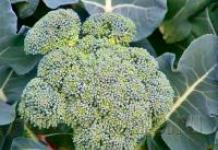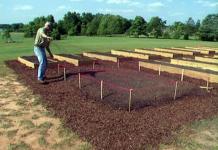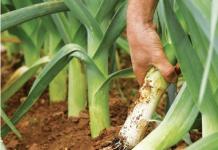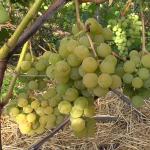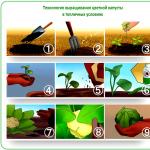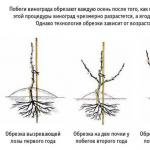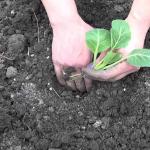Grapes begin to be grown not only in the traditional southern regions, but also where it has never grown before. This is due to the fact that through hybridization and selection it was possible to obtain frost-resistant and disease-resistant varieties. They take root perfectly and give a good harvest even beyond the Urals and in Siberia. In order for the grapes to develop normally and produce many berries, proper care is necessary. One of the very important agrotechnical procedures is the pruning of the vine.
Why do you need
Grapes, as a biological species, is a vine that can stretch for many meters. At the same time, all useful substances will be spent only on the growth of the plant, and its fruits will receive the minimum amount of necessary trace elements. Growers have noticed since ancient times that a damaged vine that stops growing produces more berries. Clusters are large and with large berries. Gradually, the process of pruning grapes has become a mandatory procedure. It pursues the following goals:
- correct formation of the bush;
- improving conditions for growth and development;
- increasing the taste of berries;
- simplification of the care of the grape bush.

Competent and timely pruning of grapes allows you to increase not only the quantity, but also the quality of the berries. They become large and juicy, and a strong stalk keeps the berries in the bunch, preventing them from crumbling.
What can be cut
Pruning is not only a way to increase productivity, but also a cosmetic procedure. In this case, old and unviable branches are removed. For aging grapes, this method affects its lifespan.
Gardeners use several methods for pruning vines. The technique is chosen depending on the bush itself and the degree of damage to it by weather conditions, for example, frost or hail. In grapes that are in the period of active fruiting, from 40 to 90 percent of the growth is cut off. 
fruit shoot
Grapes form many buds from which fruit shoots develop. They grow in summer and have tendrils and flowers. Further, the shoots have lateral branches, which are called stepchildren. Beginning gardeners may have the wrong opinion that the more shoots, the greater the yield. This is fundamentally wrong. A large number of side branches reduces the amount of nutrients and the berries will be small, and the brushes will be small. Therefore stepchildren are always removed. 
Vine
They call a stiff vine shoot, which is a liana. It can stretch several meters in length, so it is mandatory to cut it in fruit viticulture. In decorative varieties (wild,), which are used in landscape design, a long and lush vine with a lot of leaves adorns arches and decorative structures. 
Branch or sleeve
In viticulture, a sleeve or branch is a perennial vine more than 40 centimeters long.. Sleeves depart directly from the central trunk of the bush. Their number can vary from one to six. In some cases, there may be more.
The most common mistake novice gardeners make is the gentle pruning of a grape bush. In this case, only the tops of the shoots and old and dried shoots are removed.
Features of the formation of a bush
The formation of a grape bush plays a big role in its productivity and longevity. When forming a bush, the characteristics of the area, grape variety and cultivation technology are taken into account. The whole theory and practice of this process was formulated by French winegrowers a century and a half ago. There are several formation schemes, each of which helps to increase the yield and quality of berries. The formation of a grape bush can be started in the second year after planting. The entire process can take up to six years. Domestic gardeners prefer to use the formation of a bush in the form of a fan. 
fan
The fan technology for the formation of a grape bush involves the cultivation of three to five sleeves, which are located on a supporting structure in the form of a fan. The supporting structure has the form of pillars dug into the ground, between which, parallel to the ground, in several horizontal rows, a wire is stretched, to which the shoots are tied. The fan can be double-sided or single-sided. The advantage of the fan-shaped method of formation is as follows:
- ease of care for the bush;
- convenience in sheltering before winter;
- increase in fruiting;
- improving the taste of berries.

The main purpose of the fan formation is to create two vines on each sleeve. As a result of long-term pruning of the bush, it is possible to obtain up to eight sleeves, which diverge in fan-shaped shoots along horizontal supports.
Technique and schemes
Young bushes that have not entered the fruiting period should be cut only in the spring. It is important to follow some rules:
- the thicker the shoot, the longer the shoot is removed;
- the cut is carried out 2-3 cm above the eye;
- on a strongly elongated sleeve they leave the best shoot;
- when removing shoots completely, stumps cannot be left;
- when removing stepchildren, the stump should be left.

In order to form a fruit link, it is necessary to completely remove last year's vine. The method of cutting grapes includes several of the following schemes:
- short;
- average;
- long;
- mixed.
The task of the gardener is to leave the optimal number of buds on the bush and, using various methods of cutting and removing shoots and vines, form a compact bush for maximum yield.
short
This species suggests leaving no more than 4 eyes on the shoot. A short shoot in viticulture is called a knot. Usually this method is used on young grape bushes to strengthen the root system. It also provides active growth of shoots from the kidneys, because most of the annual shoots are removed. 
Short pruning is used by gardeners when forming a bush. In case of damage to a part of the bush as a result of cutting the bush, a reserve knot is formed.
Medium
This species is the most common technique in all types of vineyards. With this method, 8-10 eyes are left on the shoot. In this case, fruit-bearing branches can be arranged in an arcuate horizontally or bending down. The average pruning of grapes ensures maximum yield with high quality berries. 
Long
The long one allows ten to twenty eyes per shoot and is used on vigorous grape varieties. Some Central Asian varieties allow very long pruning, in which up to 25 eyes are left on the shoot. This method significantly activates their fruiting.
mixed
Mixed pruning is called cutting to a fruit link. This method is most often used when growing small vineyards in individual garden plots. Regular renewal of shoots allows you to maintain high yields and excellent quality of berries. With mixed pruning, it is important to form a replacement knot, which should be located on the outside of the bush. On very strong bushes, an increase in the number of eyes is allowed. 
Timing
In viticulture, various timing of pruning is practiced. Pruning in each season is determined by the goals for which work is done on the vine.
autumn
It is a mandatory process. It improves the overall health of the plant and can speed up bud break in the spring. With autumn pruning, the bush is rejuvenated, while its growth is controlled. Shortly before pruning, the vineyard should be watered abundantly so that the root system is filled with moisture. The earth around the root must be loosened. In order for the plant to easily endure pruning, fertilizing with mineral fertilizers should be used. Old branches that do not bear fruit, diseased and weak shoots should be removed. 
All biological material remaining after pruning should not be left on the site. The best option would be to burn the scraps.
Summer
Summer pruning is carried out so that the plant does not expend its strength on growing unnecessary shoots. A large number of fruitful shoots can give a bountiful harvest, but the berry will be small and tasteless. In addition, empty, leafy branches obscure the sun, which also has a bad effect on fruiting. These shoots are removed in the summer. Summer pruning can be carried out without mechanical devices, and the branches break off and pinch. 
spring
Spring pruning dates begin when stable warm weather is established. depends on the age of the bush, since a two-year-old vine is cut a little differently than a one-year-old. In spring, the plant wakes up after winter and enters the active growth phase, so all spring work on the vine must be done very carefully.
Winter (January, February)
If for some reason autumn pruning was not carried out, this procedure can be performed in winter. Autumn pruning should not be transferred to spring time. February is considered the best time for this, when the most severe frosts are already behind. Winter pruning has its positive aspects. With a dried vine, it is easier to work with and there is less chance of bringing pathogenic microorganisms onto a fresh cut. 
Grape pruning is done with a regular pruner. In some cases, a garden hacksaw and a special knife may be required. The pruner blades must be well sharpened, and before pruning live shoots, they should be disinfected with any alcohol-containing liquid. The hacksaw should have a thin blade with fine teeth. Cuts must be made on the inside of the branches. If the cut is uneven, it should be corrected with a knife blade.
Video
This video will tell you how to properly cut the grapes so as not to harm your bush and get the maximum yield of berries.
conclusions
- Pruning grapes is a must agricultural procedure.
- The recommended timing of pruning vines.
- Anything left after pruning should be burned to prevent the development of fungal infections. These are referred to.
- Do not cut with dirty tools.
Grapes are one of the liana crops, widely cultivated in different countries. When growing under natural conditions, shrubs acquire a very branched, large appearance with an indefinite nature of fertility.
The cultivation of grapes pursues certain goals - obtaining a rich harvest with certain characteristics of berries in taste and size, ennoblement and decoration of landscape design.
That is why, if you are planning any of the varieties of this plant on your site, you will have to master such care measures as grape pruning. Why, when and how to do it correctly - we will analyze all the questions in detail in this article.
Pruning grapes is not just a whim of gardeners, but a well-founded procedure within the framework of agronomy.
Properly carried out work will invariably affect the form of such a result:
- Easy control of bush density and size.
- Giving the plant a more attractive and aesthetic appearance in accordance with the thoughtful design of the territory.
- Control and improvement of the quality of pollination of inflorescences.
- Increasing the fertility of shrubs, since nutrients do not go to the development of dense foliage, the formation of multiple shoots and their nutrition, but are directed to the development of fruits.
When should grapes be cut - in spring or autumn?
Pruning of grapes is carried out all seasons, with the exception of winter, and each period has its own characteristics and recommendations. Therefore, these procedures cannot be randomly carried out, but one must first understand the differences and the need, taking into account such factors:
- grape growing region;
- selected variety;
- plant age;
- personal priorities and time availability.
Spring
Spring pruning of grapes is carried out in areas in regions with cold and harsh winters. And it is the spring procedures that are recommended when caring for young animals, since in this case all frostbitten and non-surviving shoots are removed.
Terms and Conditions:
- Stable temperature conditions within 5 degrees Celsius.
- The plants have thawed, but the movement of juice has not yet begun.
Important! The absence of juice is a fundamental point. If it is not followed, then:
- wounds on the shoots will heal for a long time;
- the plant itself will be oppressed, it may even die;
- eyes and inflorescences will develop poorly, respectively - a rich harvest is excluded.
Summer
When to prune grapes in summer? There is no clear schedule or conditions here. In fact, only sanitary care of the plant is performed, as well as pinching, chasing, pinching, breaking out unnecessary branches.
All this is done in order to prevent diseases, to ensure good access of sunlight to bunches of berries.
Autumn
In autumn, grape pruning is carried out only on mature and thoroughly rooted plants. This technique is also suitable if covering cultivation of grapes is planned.
Important conditions:
- Cut order. First, varieties more resistant to low temperatures are processed, then the rest.
- No frost - unacceptable temperature below 3-5 degrees.
Important! It is in the fall that it makes sense to identify all the shoots that will no longer bear fruit and remove them. This is done so that the shrub does not waste nutrients on maintaining the health and further development of the branches.
How to prune grapes? Schemes for beginners

To date, gardeners have developed several grape pruning technologies. Consider which is better to use in each individual situation.
short
Other names for this method are “on a knot”, “replacement”. The bottom line is that all shoots are thoroughly shortened, leaving only 2 to 4 eyes. As a result, a maximum of 40 eyes remain on the plant and it rejuvenates.
Technology features:
- If the knot has the first eye directed inward, then 3 more buds are left.
- Branches growing from the first eye break off.
Medium
With this technology, up to 8 eyes on each shoot remain intact. In this way, all low-temperature-resistant bends are preserved.
The total number of eyes is usually around 50.
Long
This method of pruning grapes is used if the main goal is to increase the fertility of the shrub. Each shoot eventually has about 15 eyes, and the whole plant - up to 60.
Important! The long pruning technique is not suitable for all varieties. Most often used on Asian grape varieties.
mixed
The most popular pruning option among practicing gardeners, in which long and short pruning of shoots alternates. The main essence of this method is that some of the branches are renewed, while others acquire higher fruiting qualities.
Important! A separate moment is the care of grape mustaches. It is advisable to trim them if you regularly care for shrubs and tie them up as needed. If you sometimes miss this moment, it is better to leave the mustache, because thanks to them the shoots develop and attach to the support.
General rules

Regardless of how you decide to cut the grapes, follow these guidelines:
- To perform the work, only a well-sharpened secateurs are used.
- Make the cuts obliquely and in such a way that they are directed inside the bush - this way they will heal faster.
- Make cuts at the internodes to minimize the risk of death of the outermost buds.
- Shortening is best done on those branches whose thickness is in the range of 6-12 mm.
- If the shoots are one-year-old, then do not shorten the thicker ones too much, and boldly cut the thin, but long ones shorter.
- To increase the fertility of the shrub, choose more shoots from the top of the sleeve. The lower ones from the clusters can simply break off.
- Don't cut too close together.
Care after pruning

With how to properly cut the grapes, you now figured out. But if you do not provide the shrub with appropriate further care after this procedure, this can turn into completely opposite results.
Therefore, follow these tips:
- If you are a novice gardener and during the pruning of grapes you did not manage to make a neat cut, be sure to treat the damaged area of \u200b\u200bthe vine. A mixture of minium paint based on natural drying oil, chalk, and boric acid proved to be effective against the “weeping of the vine of grapes”. There are no specific proportions - each gardener focuses on his own “eye”. The main condition is that the paste should have the consistency of thick sour cream.
- Apply fertilizer before bushes open. The recommended embedment depth is 35-40 cm. The option of mineral additives from 100 g of ammonium sulfate and 200 g of superphosphate is well suited. This is a calculation for each bush.
- If signs of oidium appear on the grapes, treat the shrub with milk diluted with water in a ratio of 1:10.
- Water the plants with warm water only. You can breed wood ash in it in a proportion of 0.5 liters per 4 buckets of water for each bush.
Important! Do not forget that grapes are one of the sources of food for birds. Take care of this in advance by hanging protective nets or old CDs.
Growing grapes of any variety will bring you many pleasant moments, especially if you are aiming not only to receive an annual bountiful harvest for sale, conservation of berries, making juice and wine from them, but also set the goal of decorating the site.
Remember that such liana plants are great for beautifully decorating the facade of a building, shading recreation areas, decorating a gazebo or garden fence. There are a lot of options and ideas, you just have to try them out in practice and competently perform grape pruning according to the season!
Pruning grapes. The concept of "old bush" for grapes is of little use. The fact is that in industrial production, vineyards up to 8-10 years old are not taken into account, these are considered very young plantations, especially for “distillation”. The productive longevity of the vine is calculated in decades or even centuries.
Pruning grapes. Story
In world practice, there are cases when the age of a bush exceeds 100 years, while maintaining all its qualities and maintaining high yields. So in America there is a vine bush, whose age is about 150 years old (it is not known exactly), it covers an area of almost 50 acres and yields several tons of crops annually. And this is not the only known fact. Even on the territory of Belarus, grape bushes have been preserved, even before the military planting, which are already over 60 years old. Such bushes should not be thrown away. For many years of their life, they have formed a powerful root system that is not afraid of frost and drought, thick and powerful trunks, sleeves, etc. have formed. An analysis of the harvest from such bushes shows that these berries contain more sugars, less acids, richer in mineral salts, and, simply, the berries are tastier and more aromatic.
Where to start when pruning grapes
Abandoned and neglected bush must be cut. If you do not prune, then it is very difficult to determine the variety and evaluate the taste of the resulting crop.
On a note: It is not too late to start pruning the vine at any age of the bush. It can still be given any shape.
Pruning and giving the bush the necessary shape in two stages in two years.
The main task in the first year of pruning- to ensure that by autumn shoots grow on the bush with a diameter of at least 5-6 mm, a length (of the mature part) of 10-12 buds (1.0-1.5 m). This is a very important task. Because it is on such shoots that a full-fledged crop will be formed next year. There should be approximately 2-3 such shoots on a bush per 2 m2 of trellis. There are no such number of necessary shoots on neglected bushes.
Grape pruning steps 
Pruning grapes. 1st year pruning
Pruning grapes. Stage 1. Spring (year H).
Firstly, all dry, frozen parts of the plant are cut out. Healthy annual vines grown last year have a bark color ranging from red-brown to dark brown (depending on variety); the eyes on them are dark in color, thick, large, clearly visible; when bent, the vine crackles slightly (bast bundles are torn), it is very difficult to completely break off such a shoot.
On a note: A dead shoot (withered, frozen over during the winter, not ripened) is distinguished by a gray or black color of the bark, the bark on the shoot is wrinkled, small eyes are hardly visible. When bent, such a shoot easily breaks off completely or bends without cracking, like a soft aluminum wire. On a cross section, a live shoot has a green color, the core and wood are clearly visible on it, and a dead one is brown, gray-black in color and the structure of the shoot is not visible.
These are the dead shoots that need to be removed. As a rule, the shoot does not die completely; near the place of attachment to perennial wood, 2-3 buds are alive. And there will be shoots on which there will be 5, and 7, and 10 live buds (the length of a shoot in viticulture is measured by the number of buds - this is more important than measuring it in centimeters).
The work of removing dead wood takes 2/3 of the time of the entire pruning. Please note that if on a perennial shoot all annuals (grown last year) are dead, then such a perennial shoot must also be cut out. But live perennial shoots (sleeves or cordon shoulders) try to cut as little as possible. But with a one-year increase, do not be afraid, you must remove it by 80-90% (this is natural and normal).
Secondly, after removing dead shoots, carefully inspect the bush. See what shoots (live) are left.
If the bush has the necessary shoots in sufficient quantities (6 mm thick and more than 10-12 buds long), leave them, but most likely this situation is unlikely.
Most likely you will have several of these shoots and a large number of short shoots (3-5 buds long). Leave all shoots that meet the requirements, and leave short ones (at least 6 mm thick) 4-5 pieces per 2 m2 of trellis area. At the same time, leave the shoots so that they are evenly spaced over the entire area of \u200b\u200bthe trellis.
Pruning grapes in the summer of the same year. After such a strong pruning, “sleeping” buds located in the depths of perennial wood will wake up very actively. Therefore, there will be many green shoots growing not on last year's growth, but from perennial wood (on trunks, sleeves, etc.). As such green shoots appear, they are broken out. If we leave all the growing shoots, this means that next year we will not be able to fully form a vine bush (the shoots will be too thin, with unripened wood).
This year, you will get a smaller harvest, but pay attention, the clusters and berries will be larger, and the ripening will be uniform and the harvest will taste noticeably sweeter than usual.
Pruning grapes in the autumn of the same year. At the end of October, remove the green, unripe part, the remains of leaves, antennae and stepchildren from the shoots. Feel free to cut out broken shoots and vines that are no more than 4mm thick (pencil thickness). 
Pruning grapes. 2nd year pruning
Pruning grapes Spring next year(year H+1). Pruning should begin at the end of March. Water may ooze from last year's cuts - this is normal, worse if it does not ooze. The general condition of the bush will be noticeably better - fewer damaged, frozen and dried shoots.
We proceed to the formation of a bush according to any formation. Choose the type of forming based on the shape of the trellis (it can be a canopy, a trellis along a wall up to 2 m high, etc.) and your specific conditions. There are many methods of formation in the literature. All of them, without exception, deserve attention and the right to life. But if you are not yet a very sophisticated winegrower, try starting with the Guyot system or a multi-armed cordon (in case the trellis is very high or it is an arbor). These systems are well studied, adapted to Belarusian conditions and very well described in many books by R.E. Loiko, the most respected scientist in the region.
The main thing is that the annual shoots that will yield this year should be at least 6 mm thick, 10-12 eyes long and tied horizontally to the trellis. It is important that their number does not exceed 2-3 pieces per 2 m2 of trellis and distributed evenly over its area.
I would like to draw your attention to the fact that when pruning grapes, 2/3, or even all 90% of last year's shoots are removed. This is normal, in terms of the total amount of the crop, you will not lose anything. It’s just that the number of bunches will decrease, but their size will also increase significantly and the quality of the grapes will rise by an order of magnitude (in other words, it will be sweeter).
Pruning grapes is quite difficult for beginner growers, but this is a mandatory technique, without which it is impossible to ensure an annual high yield of good quality. To properly prune grapes, you need to know all the subtleties and rules for the formation of fruit links of a shrub, as well as the optimal timing and methods of pruning. In each case, the pruner decides which shoots are best left and which ones to remove without regret. That is why without knowledge of the structure of the grape bush, the schemes for pruning young and adult bushes, their garters to supports, it is impossible to successfully form the most productive grape culture in these climatic conditions.
As a rule, it is believed that grape pruning is primarily aimed at increasing the fruiting of the plant (more precisely, its regulation), that is, at the volume of the crop, but other equally important goals are achieved with its help:
- fruit links are formed (what is it, read on);
- the influence of the polarity of the vine is reduced (what it is and how it affects the vine bushes, read on);
- the size of the bushes is reduced so that it is convenient to cover them for the winter;
- the ripening of grapes is accelerated;
- the size of clusters and berries increases;
- the taste qualities of the berries themselves improve (they accumulate more sugar, pulp);
- care for fruit-bearing bushes and harvesting is noticeably facilitated.

Advice! Pruning grapes must be carried out annually, otherwise you simply will not be able to get stable yields.
When to prune grapes in autumn
To understand when and how to prune a grape plant in the fall, you need to know the differences between spring and autumn pruning, as well as take into account the most suitable natural conditions.
How is autumn pruning different from spring pruning?
Pruning of grapes can be carried out both in autumn (after leaf fall) and in spring (before bud break). But uncut bush for the winter practically impossible(try to bend down and place long multi-meter shoots on the ground), therefore, as a rule, pruning is carried out in the fall.
Accordingly, it turns out that spring cut exactly uncovered varieties grapes.
However! It is believed that an uncircumcised bush tolerates winter better, because after pruning, the winter hardiness of the plant decreases.
In general, some growers prefer autumn pruning to spring pruning, as the bushes suffer greatly and cry in the spring (juice begins to flow from their wounds). Although there are cases when you cut the bushes in the fall, and took his wounds in the spring and cried. However, in any case, you can not help. Everything will gradually tighten itself.

When to prune in autumn: the best timing
Pruning grapes in the fall should be only after natural leaf fall. If this is done prematurely, then the bush will not receive enough nutrients from the leaves. However, if the time has come, and the leaves are still hanging, then you need to make artificial leaf fall, in other words, cut off the leaves with your hands or cut them off with pruners.
When is the best time to do this?
It is advisable to start pruning grapes only after the first frost. Just at this time, the intensive maturation of the vine occurs, and the leaves begin to turn yellow (yellowing of the leaves is a signal that they have transferred all the nutrients to the plant). And now, when the soil begins to freeze, the time has come.

The timing of grape pruning directly depends on the climatic features of your growing area and current weather conditions. Thus, the approximate timing of the autumn pruning of grapes in the middle lane (Moscow region) is the second half of October-early November.
Attention! If you do not wait for the recommended length of time, then young shoots may not have time to ripen. And if you postpone it to a later time, then the frosts will adversely affect the shoots - they will become too brittle.
What to do before and after pruning grapes
After you complete the autumn pruning of grapes, before you cut it, you will first need to .
In addition to these manipulations, the composition also includes:
- watering;
- top dressing;
- harvesting cuttings (during pruning);
- bending the vine to the ground (after pruning).
- immediate
How to prune grapes in autumn: knowledge base and pruning methods
In order for even beginners to understand the system of proper pruning of grapes in the autumn, let's dwell on the basic terminology, on the structure of the grape bush, the principles of fruiting, as well as pruning methods.
The structure of the grape bush and the necessary terminology
Before proceeding with pruning, it is worth getting to know the structure of the grape bush better. Understanding the structure of the grape bush and the principles of fruiting will allow you to most correctly prune.

The main terms that will help you better understand the structure of the bush and, accordingly, in its pruning:
- Sleeve- this is a perennial part of the grapes (old wood), like the skeletal (main) branches on a tree. Every year, new fruit links are formed on the sleeves from the shoots of the previous year.
- fruit link- this is a fruiting shoot (fruit arrow) and a replacement knot.

- Escape fruiting- this is a long vine (therefore it is often called a fruit arrow), on which 6-10 eyes are left, shoots grow from them next year, on which the whole crop happens.
- Replacement knot- a short vine (3 eyes), on which 3 powerful fruitless shoots can grow next year, but we will not let them bear fruit (so that they grow strong), and in the fall it is among these shoots that a new fruit link will form (fruiting arrow and knot substitutions).
- peephole- this is an education that unites the kidneys and ensures their proper formation. In each such eye there may be several kidneys (one central and several substitutes).
Comment! Very common in everyday life eyes are called wintering buds, but as you can see, this wrong, since there are several buds in one eye, and a young shoot can grow from each.
The principle of fruiting
The vine mostly bears fruit on young green shoots that have grown from buds on the previous year's vine (fruiting arrow). Moreover, you get the main crop precisely from the central buds, since, of course, something can also grow on the replacement (lateral) or sleeping buds, but it is noticeably worse both in quality and quantity.
Trimming Rules
Before cutting and shaping grapes, you should familiarize yourself with the basic rules and recommendations:
- Need to trim not on the ring(as in fruit trees), but leaving small stump(1.5-3 cm). If you cut it shorter, then the vine in this place can dry out and die.
- Undercut fruiting vine should in internodes(that is, between the eyes), but a little closer to the lower eye.
- If the vine not ripe, you need to cut to the mature part (to the lignified area).
- First of all should be cut all broken and diseased shoots (sanitary pruning), then - weak (short and thin, with a diameter of less than 5 mm).
- When you leave a young shoot for future fruiting, it needs remove all stepchildren so that only the vine with eyes (buds) remains.
- cropped all shoots on which this year there was fruiting (fertilizing fruit arrows).
- New fruiting shoots must be left closest to the base.
Advice! All extra young shoots are perfect for grape cuttings (propagation by cuttings).
- The knot of substitution is always is being done below the fruiting vine. If it is the other way around, then all the nutrition will go to the development of the substitution knot, since the grapes direct all the juices to the distant buds.
Interesting! This is explained by the fact that grapes have the property of polarity, which manifests itself in the priority development of the upper part of the bush or vine (shoots, leaves, clusters), while the lower part always lags behind in development.
Also, because of the polarity and to reduce damage to the plant, when removing unsuitable vine shoots, it is desirable that the wounds left be placed on only one side of the sleeve (that is, either on the inside or on the outside).
In general, pruning grapes is, in a sense, an effective fight against polarity, the purpose of which is to increase fruiting by minimizing its influence on the development of bushes.
- Usually, new fruitful arrows are formed on replacement knots.
Advice! But if it so happened that strong shoots did not develop on the replacement knots, then the fruit link should be formed from well-developed and powerful shoots that developed on the fruiting arrow.
- The length of the shoot must correspond to the length of the trellis wire, so that it is convenient for him, therefore there is no point in leaving too long (unless in reserve).
By the way! You can measure the optimal length simply by attaching the shoot to the trellis, in other words, laying the shoot to the side (to the right or left) along the first wire. Thus, you will estimate how the grapes will be located on the trellis next year.
- Choosing one of two good shoots, you should get rid of the extreme (growing away from the trellis), which again will be inconvenient to tie up in the spring.
- You must understand that during pruning, most of the growth (up to 80-90%) is removed, while leaving only the required number of future fruiting vines and replacement knots.
Thus! An adult bush (3 years old and older), formed in a fan way, with 4-5 sleeves, should have about 30-50 eyes (depending on the variety), that is, there should be about 6-10 eyes on one vine. But in autumn it is better to leave 2 times more (60-100 eyes), in other words, you must have a reserve (reserve fruiting shoots), because during wintering, a part may freeze or rot.
Important! In the spring, spare shoots need to be disposed of.
Ways to trim grapes or how many eyes to cut
It is known that each variety of grapes requires a kind of pruning. However, the number of eyes is also adjusted depending on the method of formation.
There are several ways to prune grapes in autumn:
- short pruning - involves the removal of most of the shoots. As a result, only 2-4 eyes should remain on the fruit arrow. It is used in the cultivation of technical (wine) varieties.
- Medium- each shoot after pruning contains 6-8 eyes (sometimes up to 10). Used in the cultivation of table varieties.
- Long- more than 8-12 eyes are left on the shoot. Typical for growing table and Asian grapes.
- mixed (by Guyot) - with this method of forming a bush, short and long techniques are involved. Shoots are cut off for replacement (for 3 eyes), and fruit arrows are also left, on which a new crop will ripen next season. Thus, with the help of this method, a loop is formed - the fruit vine, having fruited, is cut off, and in its place a new fruitful shoot grows, which has grown on the replacement knot.

Advice! Carefully study the information about a particular variety, because the correct method of pruning depends on how many and which bunches of grapes you get.
If there is no way to find out, then use either the average trimming method, or even better - mixed (according to Guyot), which is with a replacement knot.
How to form grapes: pruning schemeyoungbushes in autumn 1, 2, 3 years
Let's take a closer look at how to properly form and cut grapes every fall for 3 years after planting.
Remember! The goal of your pruning is to form 4-5 sleeves with fruit links by the age of 3.
Pruning grapes 1st year
You have planted, and now the time has come for the first shaping pruning.
Pruning grapes in the autumn of the 1st year is carried out as follows: you shorten your only shoot by 3-4 eyes. If you had a seedling with two shoots, then pruning should be done symmetrically, but leaving 2-3 eyes each.

Opinion! Some especially scrupulous growers believe that while the bushes are young, then in the 1st and 2nd year in the fall only preliminary pruning should be done (that is, in the first year you need to leave 6-10 eyes), and the next year in early spring - already final (up to 3 -4 eyes). The fact is that if you immediately cut it too short, then in winter, due to its youth and insufficient frost resistance, the vine can completely freeze out.
Pruning grapes 2nd year
If you did everything right last fall, then this fall you already have 4-5 powerful shoots (future sleeves). In this case, it is better to leave exactly 4 shoots, and the weakest or growing in an uncomfortable direction should be cut out.
Important! The bush should not look like a fan of 6-8 short shoots, 4-5 strong and long shoots should remain on it. Therefore, do not forget to carry out summer chasing.
Pruning grapes in the autumn of the 2nd year is carried out as follows: you shorten each of the shoots by 3-4 eyes, which is necessary (if it is not clear, then see paragraph "pruning rules") so that each shoot can be normally tied to the bottom wire of the trellis, that is, it can be located along it and not go beyond it.

The next video shows the preliminary pruning of grapes for the second year in the fall (that is, the vine is left with a large margin, not 3-4 eyes, but 2 times more, that is, 6-8).
Advice! A stock of vines is never superfluous, because in the spring you can always finish what you started and get rid of what you don’t need.
Pruning grapes 3rd year and beyond
In the autumn of the third year, the shrub will already have 4 large stems (sleeves), with young branches on each of them. It is on these young vines that you will begin to harvest.
By the way! Already for the 3rd year you will receive a small "signal" crop.
 What should the 1st sleeve look like?
What should the 1st sleeve look like?
For proper pruning in the fall of the grapes of the 3rd year, the strongest shoots on each side (on each sleeve) are again selected, the weak ones are cut out and 2 strong ones are left. Of the remaining 2 powerful shoots, the lower one is shortened by 3 eyes. This will be a replacement knot. The second shoot (fruit arrow) is left with 6-10 buds.
Advice! And yet, it is better to put 2 strong vines (fruit arrows) in the winter, and in the spring to remove the one that overwintered worse or is further from the base of the bush.
Thus, in the third year, a grape bush will be fully formed, which in the future will begin to actively bear fruit.
 Note!
The figure shows that the replacement knots need to be cut into 2-3 eyes, but it is better to leave exactly 3.
Note!
The figure shows that the replacement knots need to be cut into 2-3 eyes, but it is better to leave exactly 3.
Further! In the fourth year and in all subsequent years, autumn pruning of grapes consists in removing the vine that has already fruited, and pruning the one-year-old vine (the one that grew on the replacement pile) that will bear fruit next year (fruit arrow). The lowest vine will again be left as a replacement knot.
See the next paragraph "Autumn pruning of an adult grape bush."
How to prune an adult vine bush in autumn
Note! Most often, grapes are formed as a fan in 4-5 sleeves (multi-armed fan) on 2 planar trellis (on 1 plane they are usually formed into 3 sleeves). It is on the example of such a bush that further detailed instructions will be given for its autumn pruning.

Step-by-step instructions for pruning an adult (3 years and older) grapes in the fall for beginners:
Attention! Before you start pruning an adult bush according to the step-by-step guide below, carefully study all the information about the structure of the bush and the rules for pruning grapes, which are presented above in separate paragraphs.
- Starting with first sleeve. Let's say that it has 4 shoots and 1 bearer, but you need to leave only 2 good and powerful shoots (the vine of future fruiting) and 1 replacement knot.
- First, all the extra weak shoots are removed, as well as the already fruitful vine of the previous year.
- Then the lower vine is left on the replacement knot and cut into 3 buds.
- Next, on the 2 remaining vines of future fruiting (fruit arrows), you need to count 6-10 eyes each, and cut off the rest.
Important! The eyes should be counted from the bottom trellis wire, since the lowest ones are usually barren.
- Let's go to second sleeve. Suppose that it is the most undeveloped and it has only 2 young shoots. It turns out that the lower shoot must be left on the replacement knot, and the upper one will become the fruiting shoot. Naturally, the fruiting shoot should also be removed.
Important! In autumn, you need to leave exactly two shoots (each with 6-10 eyes), that is, 1 - the main one, 2 - a spare (in case of death of the vine - the eyes become damp or freeze). Already in the spring, if both shoots survive, the lower one will need to be cut into a replacement knot, and the upper one will be left to bear fruit.
- Third sleeve. Let's say that it has 3 young shoots and 1 bearer (of course, you need to get rid of it). However, 1 of the 3 shoots is located at the very bottom, and it is the weakest, it should be made a replacement knot, and the other 2 - fruiting vines.
- Fourth sleeve. Another sleeve with only 2 young shoots. Again, we act as with the 2nd sleeve - we leave the lower one on the replacement knot (but we cut it off not for 3 buds, but for 6-10), and the upper one - for the fruiting arrow. And, of course, we get rid of the fruit-bearing shoot.

Important! In the spring, you should remove all blooming eyes that are located below the bottom wire, with the exception of those on the replacement knots. And also all the spare shoots of fruiting, leaving only those that are located closer to the base of the bush.
Try! Some varieties of grapes are recommended to grow, forming reinforced fruit units (with a greater load), as shown in the diagram below.

Note! After 7-8 years, excessively elongated and outdated sleeves (which are already thickening plantings) begin to be replaced with new ones. This process is called grape bush rejuvenation. You cut the entire sleeve into a stump, and to change from coppice shoot growing from the ground next to a bush (originally - this bitch recovery), or from the lowest shoot growing on this old sleeve, called " spinning top”, you begin to grow and form a new one.

How to cause the least harm to the plant and at the same time correctly remove unnecessary shoots? To understand this issue, a novice summer resident needs to responsibly approach the study of the entire system of pruning grape bushes: diagrams of the structure and pruning of young and adult grapes, as well as recommendations for the skillful formation and garter of a bush.
Video: pruning a grape bush in autumn
Interesting! Unfortunately, there is always a certain psychological barrier between knowledge and action, namely: here is a novice vine grower (who has read useful tips on autumn grape pruning) approached his overgrown bush, looks at it and does not understand where which vine is, what to cut, what leave. And that's okay. Only practice will help you to solve this problem.
In contact with
Even if you have never shaped a vine before, you can handle pruning by following our tips. Pruning a bush does not require much effort, but guarantees you a good harvest.
Grapes - a liana, in the wild, lets out meter-long whips, clinging to any support, most often to trees. Its main task is to reach for the sun, accumulate nutrients, and give fruits for reproduction in the fall. Each cultivated bush on your site secretly dreams of growing up to ten meters up, hanging a few clusters somewhere under the roof. His plans do not include the obligation to supply you with a crop.
A healthy plant has a colossal regeneration power, it can and should be cut ruthlessly, otherwise you will not get high yields - in a thickened bush the berries will become smaller, and only climb from a stepladder for brushes.
Video about the features of grape pruning
Remember, no pity - just a clear understanding of what you need from him.
Let's take a closer look at the wood of your plant. Here you need to be able to distinguish its three types: summer, biennial and perennial shoots. Summer - green, bearing leaves, flowers, brushes. Biennial - vines, chocolate shade, summer shoots grow from them with a harvest. Perennial - branches, dark, bark often fringed. Branches accumulate nutrients for laying the future crop. No special fruit twigs, like apple trees. Any green shoot can equally well play both a vegetative and fruitful role. It all depends on the formation.
Now let's take a look at what you have. Do you have cold winters? How much space can you devote to a vineyard? Do you need a vine for aesthetics or purely for gastronomic purposes? The time has come to understand all the nuances of the formation.

grape photography
- Shtamb
You live where winter frosts are not particularly dangerous, or you grow a frost-resistant variety. Then choose a stamp. It requires initially a little more diligence, more space, but the harvest will bring incomparably greater than other forms. This is due to the large supply of nutrients in the tree trunk, with which you will guide your grapes. The branches from it grow at the height of human growth, do not need garters to the trellises. It has been proven that standard forms are much less affected by diseases. The stem is beautiful, hardy, productive, but intolerant of frost, it requires a lot of space.
All other forms are standardless, allowing us to shelter our green pets for the winter. Here it already matters how much space you want to define for one plant.

Photo of the standard formation of grapes
- Sleeve
Takes up the least space. In fact, this is a branch that regularly produces fruit-bearing vines. The sleeve is simple in shaping, but, having no sufficient supply of nutrients, it is quickly depleted, which requires frequent replacement with a new plant. For more than ten years, sleeve forms do not live. In addition, if the trunk requires a lot of work at the initial stage, then the sleeve will have to be constantly checked, otherwise it will quickly overgrow.
This is a bush with several branches. Usually five or six branches on different sides from the root. The yield increases, the space occupied by one bush increases, the service life of one plant increases. The fan has a larger supply of nutrients, has greater immunity, and is not as delicate as a sleeve.
- Cordon
In fact, a cordon is a trunk, which is carried along the ground, like a slate form. This formation of a vine bush is very close to the trunk, but requires more care. Due to its proximity to the soil, the cordon is more likely to be exposed to diseases. But it is more winter-hardy, it can hide, but it also takes up a lot of space. Slightly less productive. But among winter-hardy forms - this is the most fruitful. Cordons are unilateral and bilateral, that is, they are conducted from the root into one or two trunks. Bilateral cordon requires more space.

Pictured is a vertical cordon for grapes
There is also a high-standard cordon that combines these two formations. Suitable for covering large areas in the southern regions. The most productive form, giving a few centners of excellent crop quality, shade and coolness for the whole yard.
Things to remember when choosing a form:
- The climate of your site. Warm winters - we grow a trunk, the most profitable form.
- There is not enough space - we grow a sleeve, from a meter to three between the bushes - a fan or a one-sided cordon, more than three meters between plants - a two-sided cordon.
- The larger the stock of perennial wood, the greater the yield of the plant.
Now directly about the formation operation. Grapes have strong, but loose and porous wood in structure, so let's take a very sharp pruner. It is important. Either old Soviet secateurs made of high-grade steel, or German or Dutch, are suitable. A cheap pruner will wear down the wood, leading to large losses of juice and non-healing wounds - a favorable environment for the development of diseases on the bush.

Photograph of pruning grapes
In addition, remember that the vines should not be cut above the bud itself, but slightly higher. This is called cutting at the internode. It is loose and in winter frosts can easily reach the buds through the pores. We cut perennial wood like any other tree, leaving no stumps.
The main element of summer operations with grapes is the formation of fruit links. The fruit link consists of two vines. One is short, the other is long. Green shoots grow from a short one, which will become vines next year. Green shoots will grow from a long one, which will bring a harvest this year. In autumn, after harvesting, the long vine moves away from the very base.
The formation of grapes in the first year of growing the fruit link is as follows:
- Among the ripened fruit shoots - the vines are selected the strongest (thicker than a pencil) and are divided into pairs so that they grow close to each other.
- One of them is cut short, leaving 2 or 3 buds, the other is long, about 8-9 buds. The first carries the future vines, the second the future harvest.
- In the autumn of the second year, the long vine, along with all the shoots, is cut off. From the grown vines of the short one, we select the strongest two, and delete the third. We form in the same way. One is long fruit, the other is vegetative short. She is also known as a substitute.

Photo of the formation of grapes
And we repeat this operation year after year. This guarantees you a stable harvest without allowing the bush to overgrow. We maintain this balance every year. As you can see, there is nothing complicated with the fruit link, a novice grower can easily cope. Moreover, we have actually discussed with you the first type of formation - a sleeve.
We form a fan, leaving more than two fruit links, directing them in different directions. The number of fruit links is determined based on the availability of free space. As a rule, one sleeve requires about 0.7 meters per trellis. Thus, at a distance of three and a half meters, we can afford a five-armed fan.
And now we form a stamp cordon
- We choose the most powerful branch, at a length of a meter and a half we leave 5-6 pairs of vines - future fruit links.
- We cut off everything that grows below.
- We form fruit links at the top, as indicated
- We leave a larger number of deputies for the trunk, but shorter than for the cordon.
- If we are leading a trunk, we tie it to a powerful support until a thick trunk is formed that can withstand the load of foliage and crops.
- We tie the cordon parallel to the ground, raising it up to 10-20 centimeters, we lead in this way. So we will provide him with ventilation of the lower part of the wood, which prevents mold and decay, especially in winter.

Reshaping old bushes
But this is all about young bushes. And what to do with old, neglected brooms, into which powerful bushes often turn into with inept shaping or its absence? How to prune grapes from scratch? First, we cut out all the old wood from which vines do not grow. Already easier. We free the bottom of the bush so that the breeze can walk freely there. Remove all thin vines.
Cut out all the vines growing from the lower parts of the branches, pointing down. We choose no more than three or four powerful, well-ripened vines, they will become future deputies. We ruthlessly cut out the rest of the hair. Further, based on the space, we determine how many fruit links we leave on our bush. Now our wild bush has become cultivated.
If the old plant, on the contrary, has become sickly from ruthless inept pruning, we remove all the thin shoots, except for one, the most powerful. We have identified him as a substitute, from which we will grow our future fruit links, but already next year. This summer, the bush should gather strength, mature, and increase its root potential.
Bushy or improperly shaped bushes get sick more, before they reach a normal level of fruiting, they need to restore their disease resistance. Consider this by easing their harvest load for the next two or three years. It is possible that in very weak bushes it will be necessary to cut off all the flowers altogether in the next year after the reformation. And it is completely stunted that it is reasonable to completely uproot and plant a young plant. If this is some important variety, then it is better to propagate it with cuttings - grapes are very easy to cut.
Video about pruning grapes
Forming grapes step by step:
- We determine how much space and where we allocate grapes. For a gazebo - we make a stem or cordon, for a trellis - a cordon or a fan. In the greenhouse - we will limit ourselves to the sleeve.
- We always cut the vines at the internode and with a sharp pruner. Grapes are particularly sensitive to the quality of the instrument.
- We create a fruit link, constantly choosing two vines every year, fruit lashes grow from one, vegetative vines from the other.
- Depending on the shape, we create one, two or more fruit links - sleeves.
- We grow the stem and cordon in such a way that the fruit link is formed not at the base of the bush, but at the end of a perennial branch.
- During the summer, we tie the shoots to the trellis.
- In autumn, after harvesting, we cut off the vine with fruit lashes, leave two ripened new vines on the vegetative branch, cut one shortly by 2-3, the other by 8-9 buds.
- We repeat the same thing the next year, making sure that the bush does not overgrow.
- We cut off old bushes from weak shoots, normalize the load, based on its general condition.
